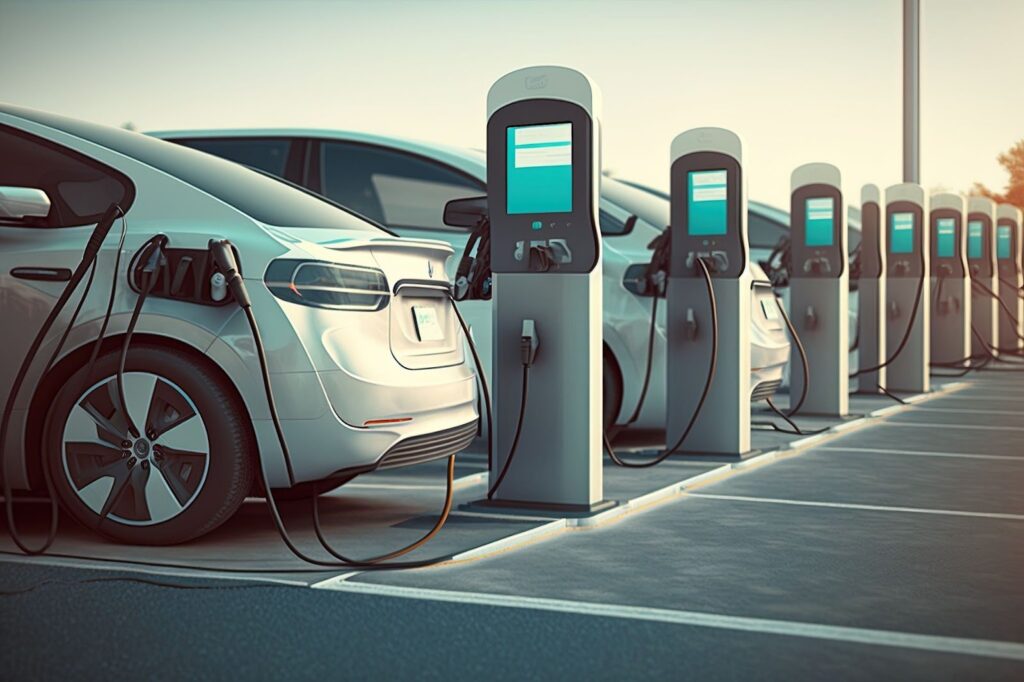
In recent years, electric vehicles (EVs) have emerged as a groundbreaking solution to address the challenges of climate change and reduce our dependence on fossil fuels. With advancements in technology and growing environmental awareness, EVs have gained significant traction as a viable and sustainable alternative to traditional gasoline-powered vehicles. This essay explores the key aspects of electric vehicles, including their environmental benefits, technological advancements, infrastructure requirements, government policies, and the role they play in shaping a sustainable future of transportation.
Environmental Benefits
Electric vehicles offer numerous environmental benefits compared to conventional internal combustion engine (ICE) vehicles. Firstly, EVs produce zero tailpipe emissions, reducing air pollution and improving urban air quality. This significant reduction in greenhouse gas emissions helps combat climate change and its detrimental effects. According to the Union of Concerned Scientists, driving an EV results in lower emissions than even the most fuel-efficient gasoline vehicles. Secondly, when powered by renewable energy sources, such as solar or wind, EVs can operate with virtually zero carbon emissions, further contributing to a cleaner and greener environment.
Moreover, EVs also help reduce noise pollution due to their quiet electric motors, creating quieter and more pleasant urban environments. This is particularly beneficial for densely populated areas and contributes to improved public health and well-being.
Technological Advancements
Technological advancements have been instrumental in driving the adoption of electric vehicles. Battery technology has improved significantly, leading to increased energy storage capacity, longer driving ranges, and reduced charging times. Lithium-ion batteries, the most commonly used in EVs, have become more efficient and cost-effective. Continuous research and development in battery technology have resulted in new innovations such as solid-state batteries, which promise even greater energy density, faster charging times, and improved safety.
Additionally, advancements in motor and powertrain technology have enhanced the performance and efficiency of electric vehicles, making them comparable to their conventional counterparts in terms of acceleration and top speed. Tesla’s electric vehicles, for example, have demonstrated remarkable acceleration capabilities, challenging the notion that EVs are lacking in performance.
Charging Infrastructure
One of the key considerations for widespread EV adoption is the development of a robust charging infrastructure. A well-established charging network is essential to address range anxiety concerns and provide convenient charging options for EV owners. Governments, private companies, and electric utilities are investing in the installation of charging stations in public spaces, workplaces, and residential areas.
Different types of charging stations cater to various charging needs. Level 1 chargers, which utilize standard household outlets, provide a slower charging rate suitable for overnight charging. Level 2 chargers, typically installed at workplaces and public locations, offer faster charging speeds, enabling EV owners to recharge their vehicles in a few hours. The emergence of fast-charging technology, such as DC fast chargers, enables rapid charging times, similar to refueling a conventional vehicle, making EVs more practical for long-distance travel. These fast chargers are often installed along major highways, allowing drivers to quickly recharge their vehicles during road trips.
Furthermore, innovative solutions like wireless charging technology are being developed, which allows EVs to charge simply by parking over a charging pad embedded in the ground. This type of charging offers convenience and ease of use, further simplifying the charging experience for EV owners.

Cost and Affordability
While the initial purchase price of electric vehicles may be higher than that of traditional cars, the total cost of ownership over the vehicle’s lifespan is often lower. EVs have fewer moving parts, reducing maintenance and repair costs. The absence of oil changes and reduced brake wear contribute to lower operating costs compared to internal combustion vehicles. Moreover, electric charging costs are generally lower than the cost of gasoline, resulting in potential long-term savings for owners. As technology continues to evolve and economies of scale are realized, the cost of electric vehicles is expected to further decline, making them more affordable and accessible to a broader range of consumers.
In addition to lower operational costs, governments and various organizations provide financial incentives to encourage EV adoption. These incentives can include tax credits, grants, rebates, and reduced registration fees. By making electric vehicles more financially attractive, these incentives promote a faster transition to cleaner transportation options.
Government Support and Policies
Governments around the world are implementing various incentives and policies to promote the adoption of electric vehicles. These measures aim to accelerate the transition to a sustainable transportation system and reduce greenhouse gas emissions. Financial incentives play a significant role in encouraging consumers to choose electric vehicles. Tax credits and rebates offset the higher upfront costs associated with EV purchases, making them more financially appealing. Some countries, such as Norway and the Netherlands, have even implemented policies to phase out the sale of new gasoline and diesel vehicles entirely, further incentivizing the adoption of electric vehicles.
In addition to financial incentives, governments are investing in research and development, charging infrastructure, and public awareness campaigns to support the growth of the electric vehicle market. Policies such as zero-emission vehicle mandates, stricter emissions standards, and the establishment of low-emission zones encourage automakers to produce more electric vehicles and contribute to cleaner air quality in urban areas.
Impact on Energy Grid
The widespread adoption of electric vehicles poses challenges and opportunities for the energy grid. While EVs increase electricity demand, especially during peak charging periods, they also offer opportunities for load management and grid balancing. Smart charging technologies and vehicle-to-grid integration enable EVs to become part of a flexible and sustainable energy system. By leveraging bidirectional charging capabilities, EVs can provide grid services by storing excess electricity during times of low demand and feeding it back into the grid during peak periods. This vehicle-to-grid integration helps stabilize the grid, optimize the use of renewable energy, and minimize the need for additional infrastructure investments.
Moreover, the increased demand for electricity driven by electric vehicles presents an opportunity to integrate more renewable energy sources into the grid. By aligning the charging of EVs with the availability of renewable energy, such as during periods of high solar or wind generation, the environmental benefits of electric vehicles can be further enhanced.
Electric vehicles are revolutionizing the automotive industry and paving the way towards a sustainable future of transportation. With their environmental benefits, technological advancements, improving charging infrastructure, cost savings, government support, and potential grid integration, EVs are becoming an attractive option for consumers worldwide. As the world shifts towards clean and renewable energy sources, electric vehicles will play a crucial role in reducing emissions, combating climate change, and creating a greener and more sustainable transportation system for generations to come. By embracing this transformative technology, we can drive towards a future where mobility and environmental stewardship go hand in hand.

